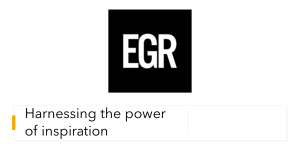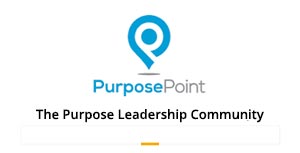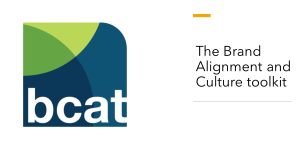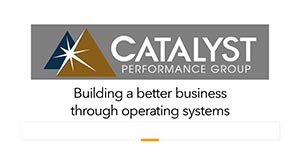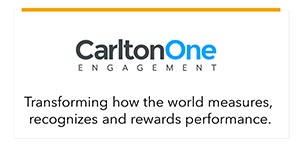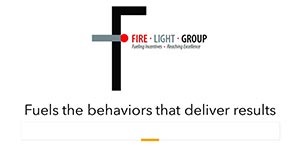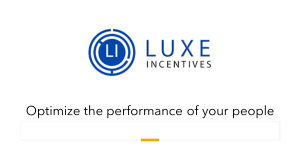In-House or Agency Support? What Makes Sense for Your Social Media Marketing
.jpeg) As companies face potential economic headwinds, more are deciding upon the merits of hiring in-house social media support or engaging an agency. Here are some considerations to help make the right decision based on your purpose, goals, and objectives.
As companies face potential economic headwinds, more are deciding upon the merits of hiring in-house social media support or engaging an agency. Here are some considerations to help make the right decision based on your purpose, goals, and objectives. By Bruce Bolger
An Overview of the Economics
Start By Determining Your Purpose, Goals, and Objectives
General Recommendations on In-House Versus Outsourced
Click here for links to information about EEA sponsors; here to subscribe to ESM weekly; here for an ESM media kit.
Does it make sense to hire a full-time social media marketer or use an agency? The answer depends on the purpose, goals, and objectives of your strategy and the skills already available on your team or at an agency you might already employ for other purposes. Here are guidelines for making the right decision based on our years of experience providing social media and newsletter marketing for clients in all areas of business.
For organizations using social media mainly for posting news about their employees and general announcements without a comprehensive, integrated, permission marketing program harmonized with sales efforts, the requirements are pretty basic and do not require a full-time employee. These companies usually use social media to spread news about themselves, employees and activities, with no strategic connection to e-mail newsletters, white papers, events, or other content—tactics which require much more basic skills and generally no more than several hours a week for a competent social media editor. So, if you plan to hire someone full-time, be prepared to find other work for him or her to do.
On the other hand, if your social media manager oversees your entire permission-marketing, relationship building strategy, including social media, decks and text for presentations, videos, and content for e-newsletters, white papers for sales support and events, along with coordination with the sales team and analytics, and reporting, etc. that requires a higher set of skills and comes much closer to requiring nearly full-time expert assistance. This person has to know the ins and outs of the industry, the influencers, the persona of decision-makers and gate-keepers, and have the industry knowledge to intelligently comment and share. That's a tall order for a fresh out of school marketing communications major, even a highly competent candidate.
An Overview of the Economics .png)
Given the varying costs of hiring in-house staff versus agencies, the decision should not only be driven by budget but by potential impact and return on investment. According to ZipRecruiter, pay for a full-time social media editor starts at around $30,000 to $40,000 depending on the region, presumably less for the B2B (business-to-business) or SMB (small to medium-size business) markets, ranging up into the low six figures for a consumer brand or large company. This pay range isn’t much different than what a company might pay for outsourced or agency-provided services, with the exception of accounting for the additional payroll and benefits costs of hiring full-time employees.
The bottom line: unless you have a strategic integrated social, e-newsletter, video and live content marketing strategy, a social media editor does not have to have much industry expertise and will not require a full-time job to get the job done. You had better find something else for this person to do as well, such as other tasks to support your sales and marketing efforts, or it might make sense to hire an agency or independent contractor.
On the other hand, the type of talent for a serious, ROI-based fully integrated content marketing strategy on a full-time basis will cost you in the six figures, as explained below, so its important to keep the potential return on investment in mind.
Start By Determining Your Purpose, Goals, and Objectives
Every business development strategy should begin with a clear purpose, goals, and objectives. What specifically are you trying to achieve? These are the three most prevalent social media approaches, in order of prevalence, based on our experience.
1. Consistent house organ-oriented marketing. These organizations use social media and/or newsletters on a consistent basis (multiple posts a week, one or more e-newsletters per month) to make company announcements and highlight milestones, clients, products and features, events, special offers, and industry research. This approach is characterized by posts that mostly talk about the company, people, and activities and might also weave in references to industry research or association news. Some companies in this category focus specifically on promoting various product features and nothing else. Most do not frequently share or comment on information from other companies or experts, other than to congratulate clients or suppliers or share association research. Some of these companies add short videos, clips, or decks for multi-media impact.
Measurement. Most in this camp track engagements, likes, and shares, and by who and perhaps who opens their e-newsletters and what content is accessed. In this case, there is usually no formal attempt to link the activity to sales, but rather by the number of new connections and relationships being built.
Time requirements. This level of posting requires no more than about 10 to 15 hours a week at most to come up with the content, communicate with stakeholders, obtain approvals, share reports, based on a cadence of two to four posts a week and two newsletters a month. If it takes longer than this, there is something wrong with the job design or candidate.
Skills required. Basic knowledge of the mechanics, norms, and tools of social media. There is no real need to have deep industry expertise, because the posts do not require that level of insight or experience working with industry executives. Generally, the direction can be provided by the manager overseeing social media. If using e-newsletters, this requires knowledge and comfort with popular CRM (customer relationship management) packages.
Candidate profile. The profile is generally an entry-level or candidate having a year or two of experience with strong communications skills and comfort with social media and CRM technology. Or, it could be a recently retired up-to-date communications professional or home-bound parent, or someone already on your team who has these capabilities.
Pay range. This post goes for the lower-end of income for marketing communications and social media jobs in your region.
2. Inconsistent house organ marketing via social media and/or newsletters. This is generally the same approach as the above except conducted with less discipline and strategy.
Measurement. The more haphazard the posting and e-newsletter sequence, the more haphazard the tracking. This category of social media marketing almost never deploys serious measurement processes beyond likes, tags, comments and shares.
Time requirements. This approach requires even less time than the consistent house-organ strategy, perhaps six to eight hours a week.
Skills required. Same as above.
Candidate profile. Same as above.
Pay range. Same as above.
.png)
3. Develop and implement a fully integrated permission-based marketing communications strategy. This isn't just social media, it's a targeted relation-ship building strategy aligned with sales that combines social media, your own blogs and newsletters, and other content specifically designed to build credibility with your targeted audience and support the sales process at every step. Within this category there are several dimensions that affect the skills set requirements, including two primary approaches—technical and permission-based.
A. The technical approach. The most technically “sophisticated” social media and e-newsletter marketers use AI-automated and self-training systems to scrape Linkedin, other social media or trade show and association databases and then produce and distribute automated messaging, connection requests, and followups with A/B and other testing. This requires a specialized set of skill sets and technical aptitudes. While the Enterprise Engagement Alliance does not subscribe to this automated approach, it is commonly practiced and needs to be mentioned.
Time requirements. On the one hand, this approach involves a blitz of strategy design, content generation, distribution, tracking and reporting. On the other hand, a lot of the implementation is automated. This is not a full-time job except at a large organization with multiple communities and e-newsletters, unless it also includes development of content for all other media, events, and sales use, which requires a separate set of communications skills from the technical approach.
Measurement. This approach promises a high level of reporting and measurement based on views, likes, shares, accepted connection requests, engagements, conversions, types of content engaged with, by whom, etc.
Skills required. Specialized technical knowledge of social media and AI tools, A/B testing, analytics, reporting, etc., plus sufficient knowledge of the industry and prospect personas to identify content strategies and topics for further testing.
Candidate profile. At least several years of experience in marketing automation with a firm grasp of technical possibilities and metrics and, if possible in one candidate, an aptitude for quickly learning about other industries without necessarily knowing anyone in them.
Pay range. This will require paying the rate of mid-range marketing automation jobs in your area, well above the base for social media practitioners.
B. Permission-based targeted business development. This approach advocated by the Enterprise Engagement Alliance and by legendary marketers Seth Godin, Don Peppers, Martha Rogers, and others focuses not on just creating a sales pipeline or promotional list, but on building relationships with prospects, even if not in a buying mode. Based on the premise that it’s difficult to sequence when organizations will make purchasing decisions about enterprise engagement or total rewards, or for any type of consumer and business-to-business product or service, the goal here is the opposite of the technical approach: it focuses on building authentic, human relationships. This requires strong multi-media communications and product skills; analytics; and ideally meaningful relationships in and knowledge of your field and its key players.
Permission marketing focuses on identifying and building relationships with potential customers by providing not only information about your organization but focusing specifically on insights, games, videos, surveys, or entertainment that helps or engages your prospects in your brand. To become a trusted advisor, this approach also comments on and shares insights, research, and information from other organizations and leaders of potential value to the target audience.
Time requirements. This approach comes as close to a full time job as any of the above because it can include not only the content for the social media and e-newsletters, but: daily commenting and sharing of content by strategic targets or influencers; creation of longer articles and white papers for posting, publishing, and supporting sales efforts; production of videos, YouTube shows, and live events, etc., and overseeing posts by designated people on your team to amplify distribution.
Measurement. Ideally, permission marketing combines the skills of a marketer who understands the personas, needs, and interests of the customer profile; the ability to produce the topics and type of content suited to the personas and use cases; and the analytics of the technical marketer, including using AI to gain another perspective on potential correlations and causations between content, engagement, and action. The good news is that you can expect a measurable return on investment that, based on your organization’s profit margins, provides a general idea of what you can afford to pay for having access to this type of capability or organization.
Skills required. The persona for this candidate is an industry expert with senior-level relationships in your field with strong communications skills who knows how to focus on helping rather than selling. In many fields, there are agencies led by former industry executives or business communications specialists who can comfortably discuss strategy face-to-face with an executive at any level at a potential client; who is continuously curious about your field and who has the gravitas to fill in if your senior management could not make a presentation at the last minute. It may be difficult to find a senior marketing communications expert with full analytics skills, but the right candidate knows what information is relevant and how to get it.
Candidate profile. The more this individual knows about your field, the better. For instance, in the field of human resources, that would include people like Josh Berson, Founder of the Josh Berson Company, or Bret Starr’s TSC, formerly the Starr Conspiracy, which focuses on HR technology. Every field has agencies, often founded by former executives from that area of business, or trade business journalists who have knowledge, relationships, and strong communication skills. This candidate might have headed up marketing communications at a leading industry player or is owner of the agency.
Pay range. Industry experts with strong communications skills or a team of communicators who can write and speak authoritatively about your business in a way that enhances your thought leadership, along with the analytics capabilities, is a six-figure position, depending on the field.
General Recommendations on In-House Versus Outsourced 
So, how to determine if you wish to hire an inhouse person, agency, or independent contractor?
For those in the first two categories without a rigorous strategy, implementation, and measurement process, hiring a full-time social media employee without having that person handle other marketing communications, sales support, or other tasks likely is a waste of money. Basic house-organ social media and e-newsletter strategies do not require full-time work. A much better solution is to find someone inhouse who might have the talents to handle these tasks rather than to pay for a full-time person. If that is not possible, it pays to look for an agency in your field simply because a basic social media/e-newsletter routine is not a full-time job unless you find other work for that role.
For those serious about using social media as a foundational strategy, the cost rises quickly, because it requires a senior-level person with expertise and gravitas in your field that simply will not come cheaply. This is where it may become necessary to hire an agency or fractional marketing communications specialist, because the full-time cost of someone with this level of expertise sets a high bar for return on investment. In this case, it pays to look either for an agency led by an industry leader or potentially for a young-at-heart marketing communications executive heading off into retirement still seeking to create value for an organization. The candidate for this job must be able to have an informed eye-to-eye dialog with your organization’s prospects or your have little chance of delivering compelling content to your prospects and customers.
For More Information
Bruce Bolger, FounderEnterprise Engagement Alliance
914-591-7600, ext. 230
Bolger@TheEEA.org
Enterprise Engagement Alliance Services
 Celebrating our 15th year, the Enterprise Engagement Alliance helps organizations enhance performance through:
Celebrating our 15th year, the Enterprise Engagement Alliance helps organizations enhance performance through:
1. Information and marketing opportunities on stakeholder management and total rewards:
- ESM Weekly on stakeholder management since 2009. Click here to subscribe; click here for media kit.
- RRN Weekly on total rewards since 1996. Click here to subscribe; click here for media kit.
- EEA YouTube channel on enterprise engagement, human capital, and total rewards since 2020
 Management Academy to enhance future equity value for your organization.
Management Academy to enhance future equity value for your organization.3. Books on implementation: Enterprise Engagement for CEOs and Enterprise Engagement: The Roadmap.
4. Advisory services and research: Strategic guidance, learning and certification on stakeholder management, measurement, metrics, and corporate sustainability reporting.
5. Permission-based targeted business development to identify and build relationships with the people most likely to buy.
Contact: Bruce Bolger at TheICEE.org; 914-591-7600, ext. 230.






